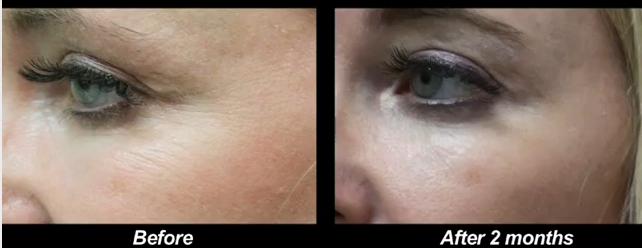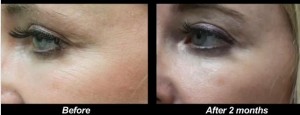
Botox can help improve the appearance of crows feet wrinkles by relaxing the facial muscles which cause them.*
Facial wrinkles are perhaps the greatest concern in terms of aesthetics related to signs of aging. Many people try to maintain a youthful appearance with skin care and exercise regimens, as well as healthy diets. All three assist with an overall healthier lifestyle but sometimes facial wrinkles are not escapable. Many then turn to wrinkles treatments, such as Botox for crow’s feet.
The Food and Drug Administration first approved Botox (onabotulinumtoxinA) in 2002 for cosmetic applications. It’s been used ever since as a wrinkles treatment with initial approval only for glabella frown lines on the forehead and in between the eyebrows. That FDA approval recently broadened, with approval now as an effective temporary treatment with Botox for crow’s feet, the wrinkles that form next to eyes.
Botox was previously approved for other non-cosmetic conditions such as chronic migraines, severe underarm sweating and blepharospasm (eyelid spasm).
CROW’S FEET TREATMENT OPTIONS

Los Angeles patient before and after her treatment with Botox for crow’s feet. Botox was recommended as the best procedure for this correction.*
Crow’s feet are treatable with both surgical and nonsurgical treatments. Botox for crow’s feet use is one of non-surgical treatments with the highest efficacy. Botox is a botulinum toxin type A (BTX-A) formulation that is injected to many areas on the face to address wrinkles. Botox temporarily reduces the appearance of wrinkles for approximately three to four months. Additionally, many people are now incorporating Botox treatments as a preventative measure to minimize and reduce in the future even before they appear.
BOTOX FOR CROW’S FEET WRINKLES
Aging and repetitive facial expressions both contribute to wrinkles. Aging naturally causes skin to loose elasticity and suppleness. Combined with environmental factors such excessive sun exposure or smoking, it all leads to premature aging. Free radicals and constricted blood vessels also negatively affect skin.
As for repetitive facial expressions, they naturally crease the skin. Facial expressions such as smiling, laughter and squinting create creases that shoot outward from the eyes. These same creases that form continuously eventually turn into permanent wrinkles over time. Dynamic wrinkles are those occur when your face is in motion. Static wrinkles are those still visible even when the face is at rest.
Botox for crow’s feet is helpful with:
- Decreased skin elasticity
- Depleted fatty tissue around the eyes
- Orbicularis oculi muscle contraction
Botox improves the appearance of and temporary eliminates wrinkles by temporarily inhibiting muscle contraction. It blocks nerve cells from releasing acetylcholine, which triggers muscles used during facial expressions. Skin then appears smooth and remains crease free. Botox for crow’s feet is injected into specific areas of the orbicularis oculi muscles, which surround the eye area.
WARNING AND SIDE EFFECTS FOR BOTOX
Since Botox is made from a toxin, Botox’s box warns that the effects of the toxin produced by the bacterium Clostridium botulinum may spread from the injection site to other areas of the body. However, the FDA reports that there has never been a confirmed serious case of toxin spread when used properly. When used on crow’s feet, the most common side effect is swollen eyelids.
